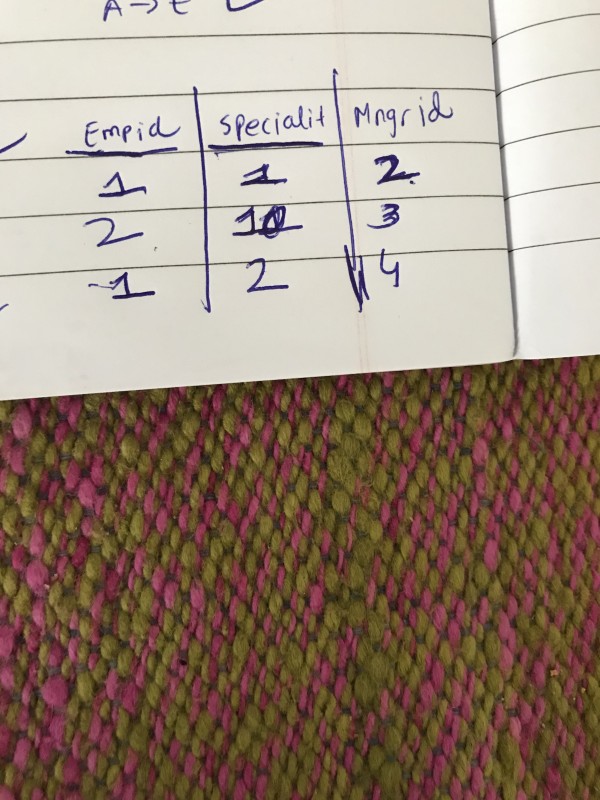Just See The 1st ,3rd and 4th Statements Initially:
1. Employee has many specializations . So Emp_id cant be Primary key(as for 1 value of Emp_id there are many specializations).
3. Each Specialization has many managers . So Specialization cant be primary key.
4. But for each speciality of an employee , they have only 1 manager.
So emp_id+speciality = Primary key.
Now finally see the 2nd statement : Cleary states that mngr_id->speciality.
Lets assume A=emp_id,B=specialization,C=emp_id
So its like AB->C and C->B , where key = AB . So basically it is in 3NF, as AB=Superkey & B is prime attribute.
But not in BCnF as C is not a super key.(Or prime attribute B is transitively dependent on key=AB). so not bcnf.